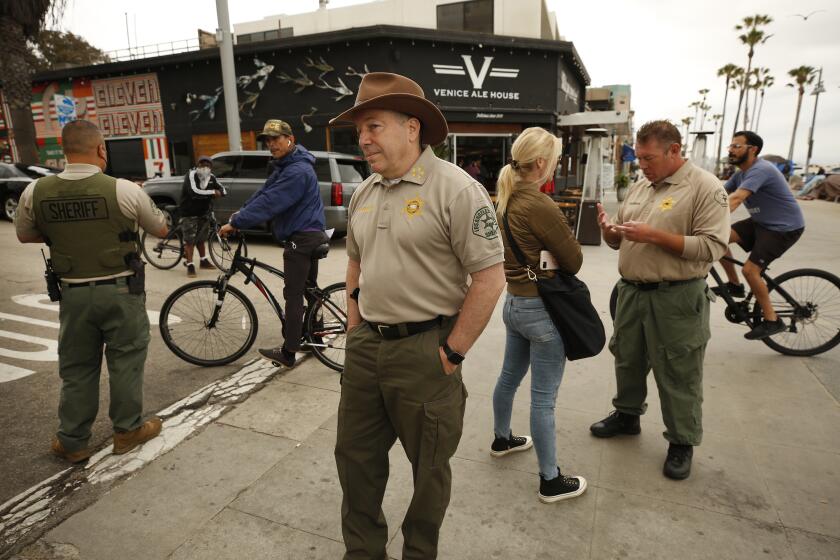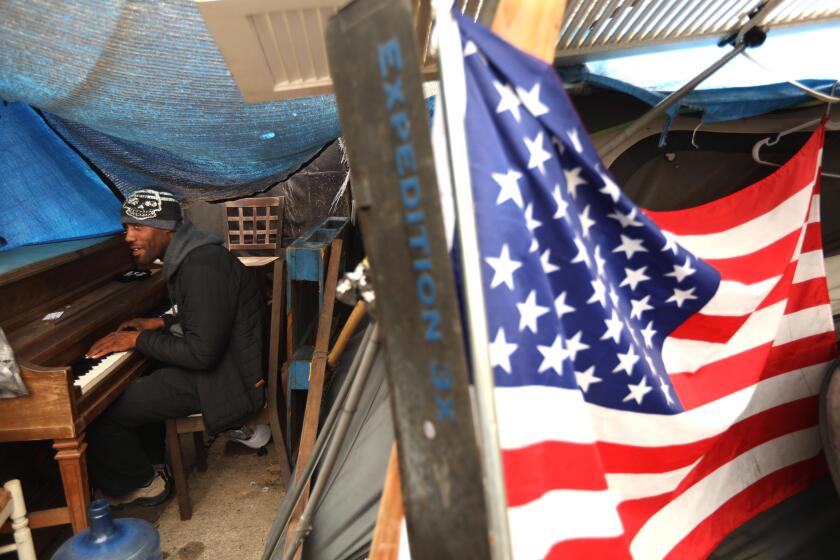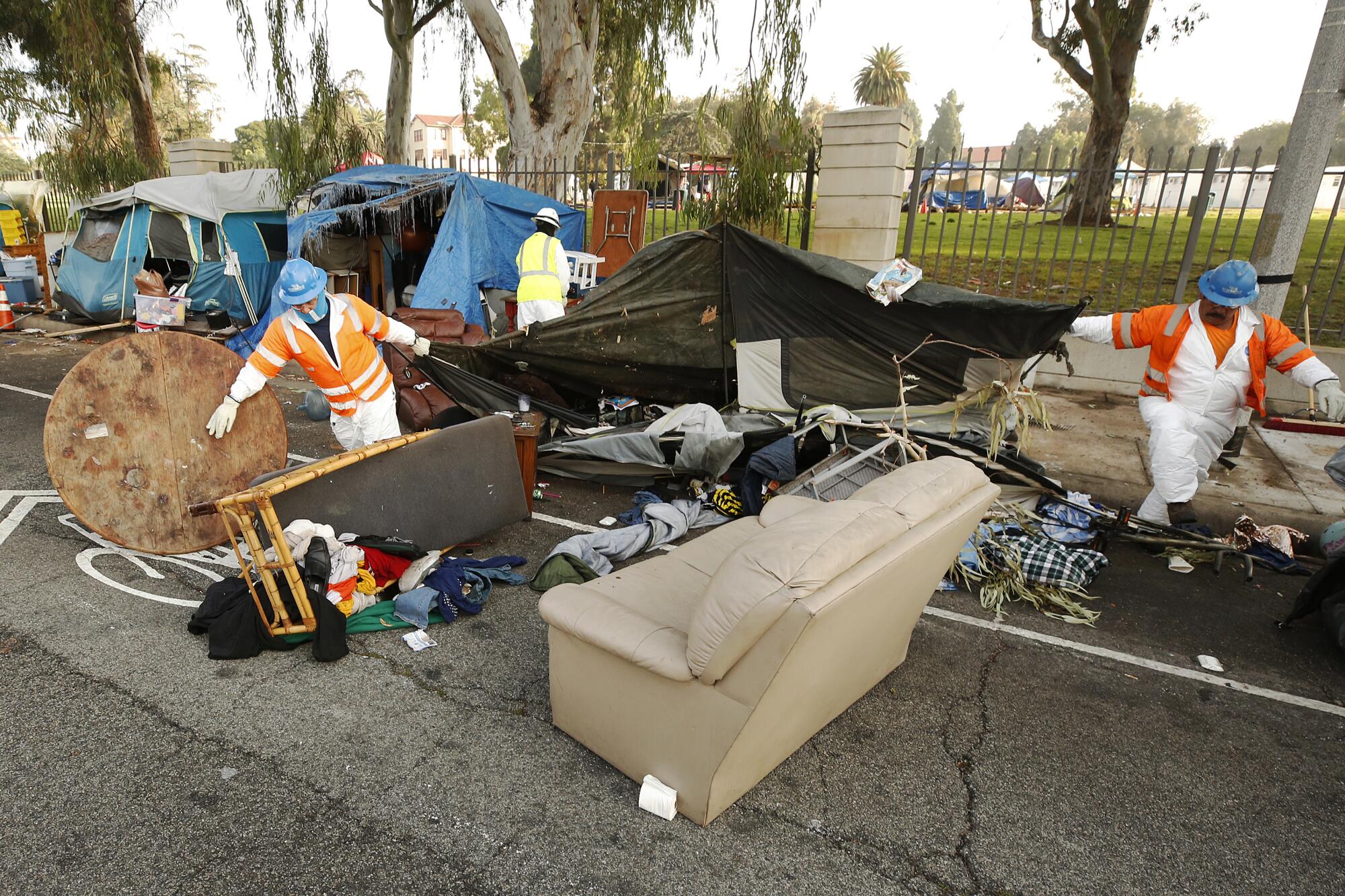
A bulldozer roared outside GemBob Brookhyserâs tent Monday morning as he yanked on an extension cord caught in a tangle of his belongings. Half a dozen veterans in the Veterans Row homeless encampment along San Vicente Boulevard scrambled to get their possessions into bins and onto moving vans driven by volunteers.
Tensions were high on moving day at the encampment, which sits along the perimeter of the historic Veterans Affairs campus near Brentwood. Roughly 4,000 veterans in the county are homeless, and about 40 have been living at the Veterans Row encampment for the last several months.
The effort was the byproduct of several months of outreach to the homeless veterans community, said Robert Reynolds, an advocate with AMVETS, the veterans service organization. Advocates say they have been meeting with veterans on the street to prepare them to leave the encampment and move into a temporary tent village on the VA campus itself. The process could be jarring.
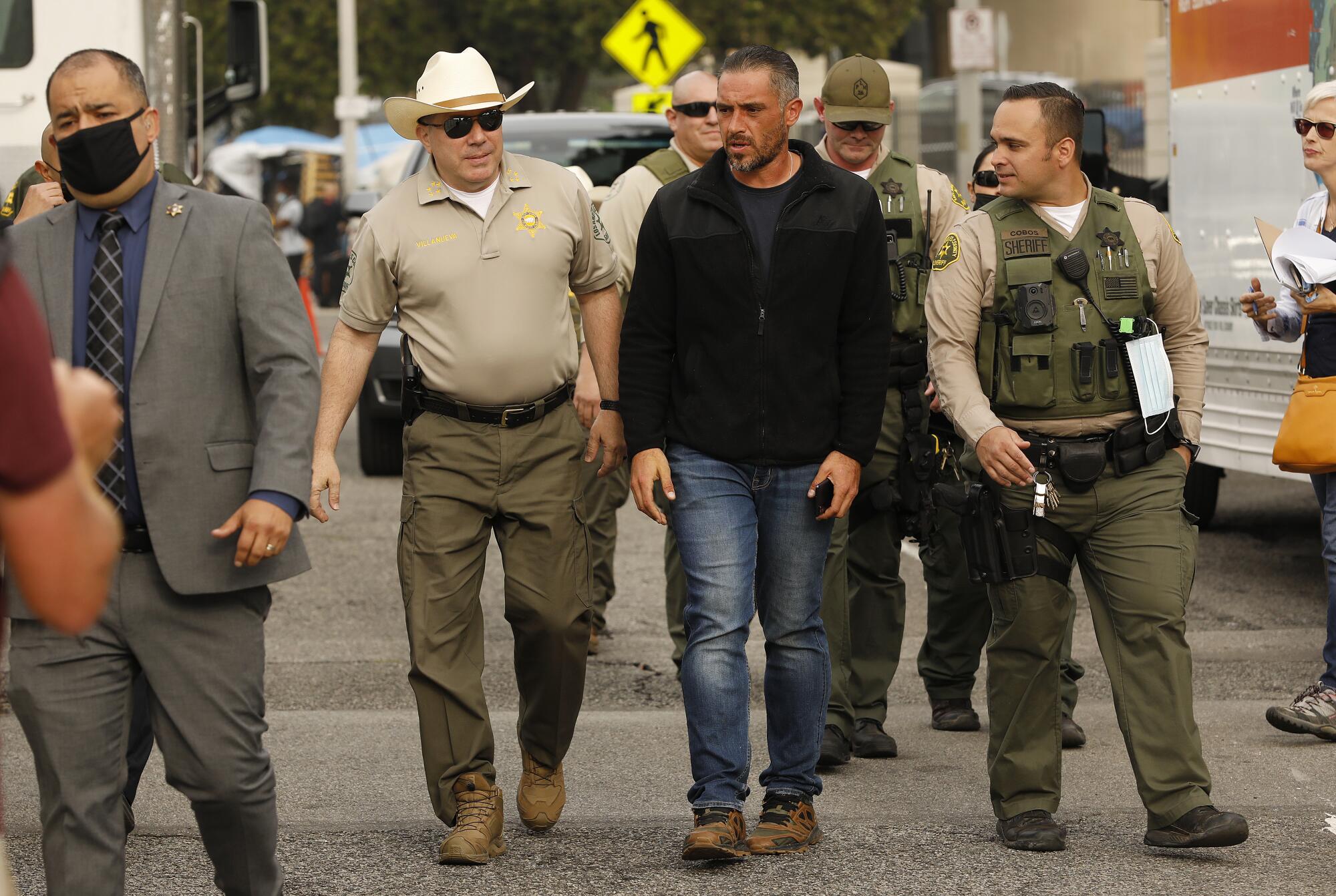
âYou get a veteran inside, another one shows up,â Reynolds said. A lack of resources offered by the federal Department of Veterans Affairs has led to a steady increase in the homeless veterans population, he said, leading to the encampment outside the campus.
Volunteers say the next step is to hold the VA accountable for its promise to find housing for the veterans and to make sure that the tent village on the campus does not become another forgotten Veterans Row. The VA intends to move the veterans into a tiny-home village on the campus once it is completed. Several tiny homes are already occupied by veterans, but dozens more need to be set up.
âItâs infuriating and heartbreaking, because for so long these veterans were forgotten,â said Diego Garcia, an outreach volunteer and Army veteran working with AMVETS.
Last month, U.S. Veterans Affairs Secretary Denis McDonough promised to find housing for the veterans from the encampment by the beginning of this month, and for 500 other homeless veterans by the end of the year.
âI think one of the things weâre really trying to do is focus on concentrated outreach with individuals,â said the VA Medical Center director, Dr. Steven Braverman, after the encampment was cleared. âWeâre trying to understand that sometimes folks have to be treated as comrades, as part of a community, and try to keep people comfortable as theyâre making the transition and working with them.â
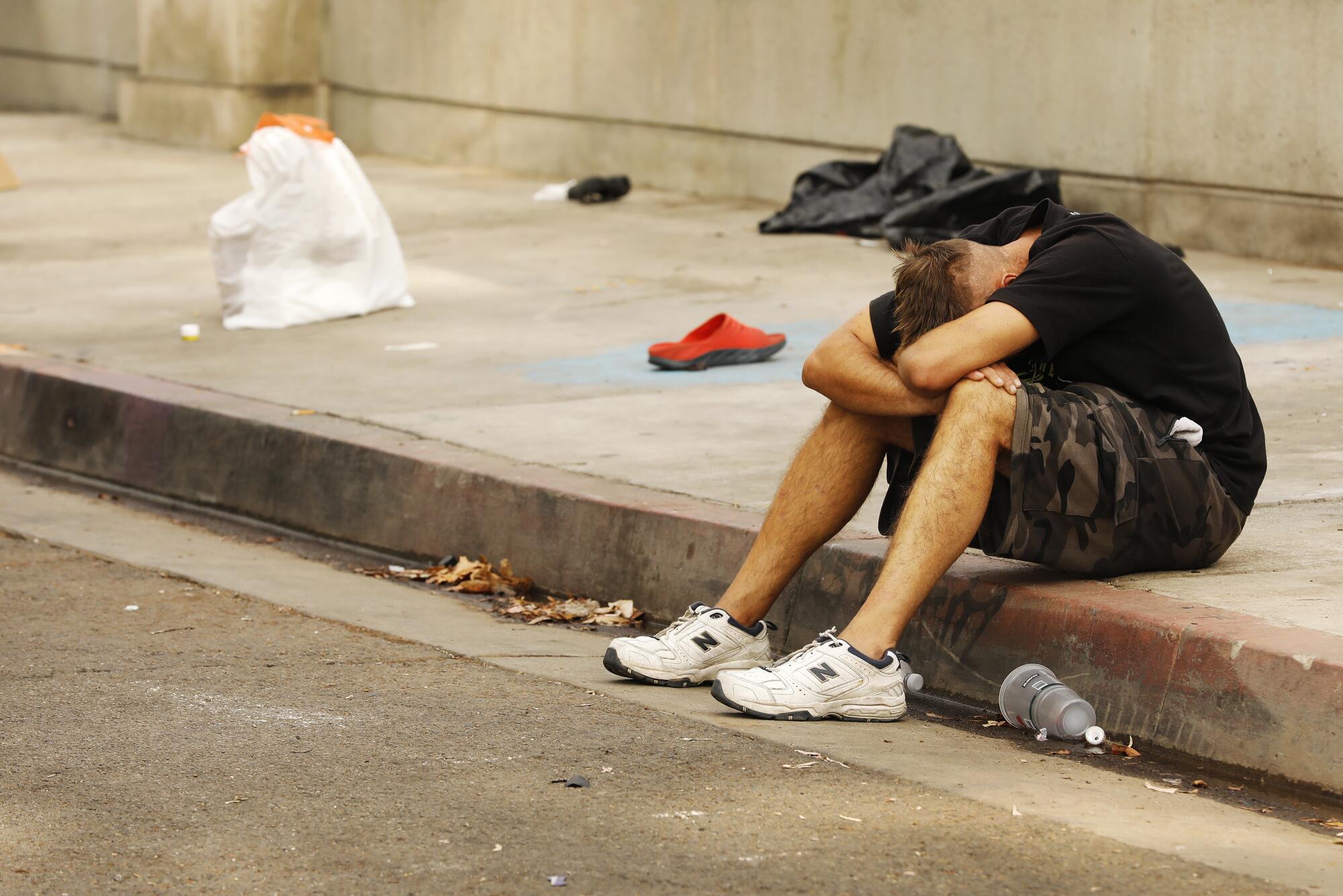
The number of veterans at the San Vicente encampment has fluctuated, but a count last month put it at about 40. By Monday morning, there were only six veterans remaining at the Veterans Row encampment.
Brookhyser, a U.S. Army veteran, scrambled to move his items before an L.A. County bulldozer could come and scrape away the tent he has lived in for the last year.
âItâs been surreal,â Brookhyser, 52, said as he described his time at the site. âAll these people have these fancy [homes] and they donât want us here. Even though this property belongs to us. Thatâs why we have to put up what we always put up with. Iâve had water, beer thrown at me. Those people honk their horns, they harass us. For no reason.â
As the bulldozer crushed furniture and a metal shed, Rick Reeves Jr., another Army veteran, paced the tent where he has lived for the last two years.
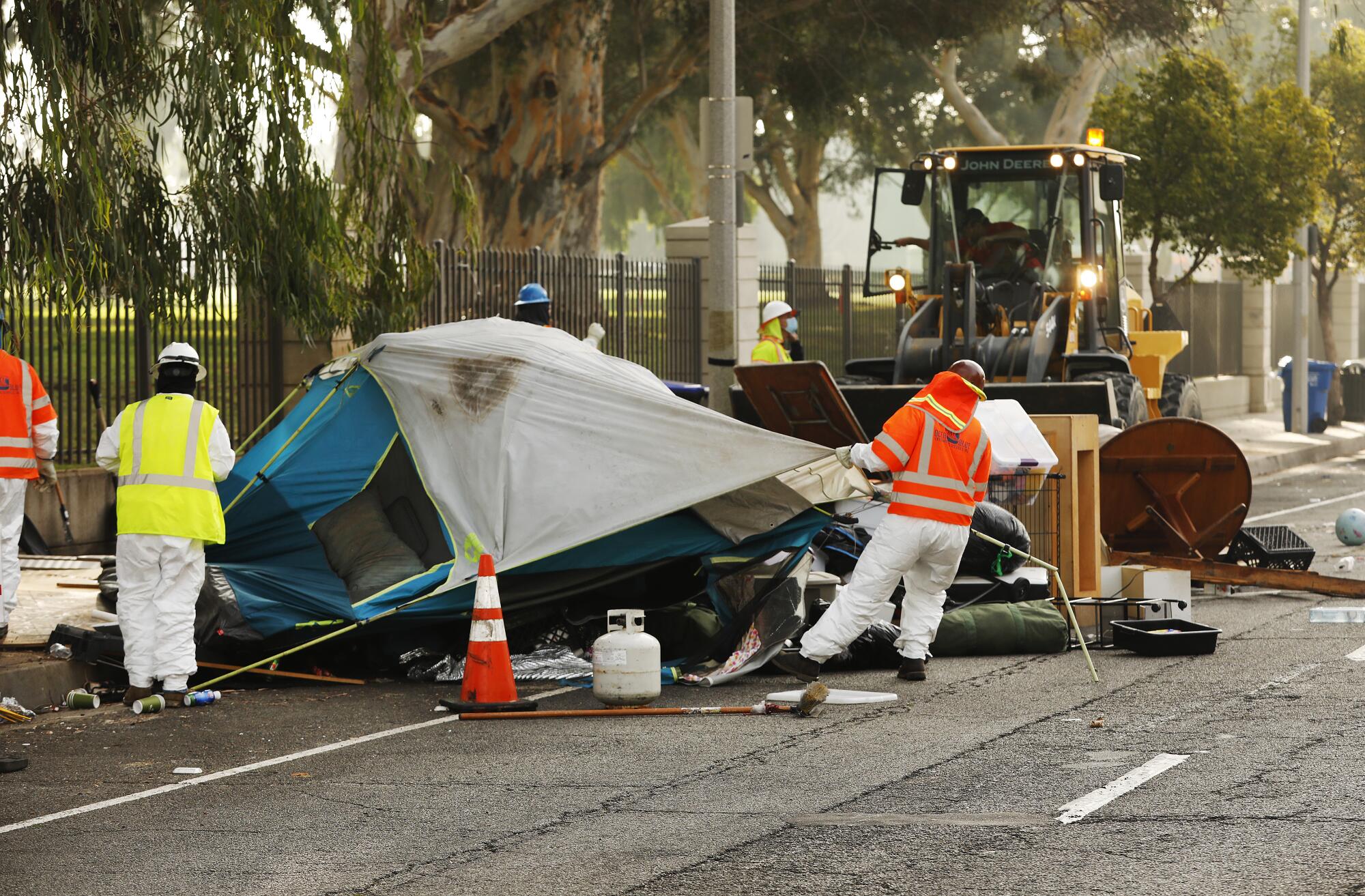
âIt could have gone so much worse,â he said. âMost of my stuff is already getting ready for storage. Iâm ready to move on from here. Itâs been a real mess on the row.â
Volunteers helped veterans load their belongings onto moving trucks and some will be able to use storage space at the VA campus, Reynolds said.
Douglas Bue, 65, made his way through the cleanup in a wheelchair. He scoffed at the scene around him, where he lived for the last month.
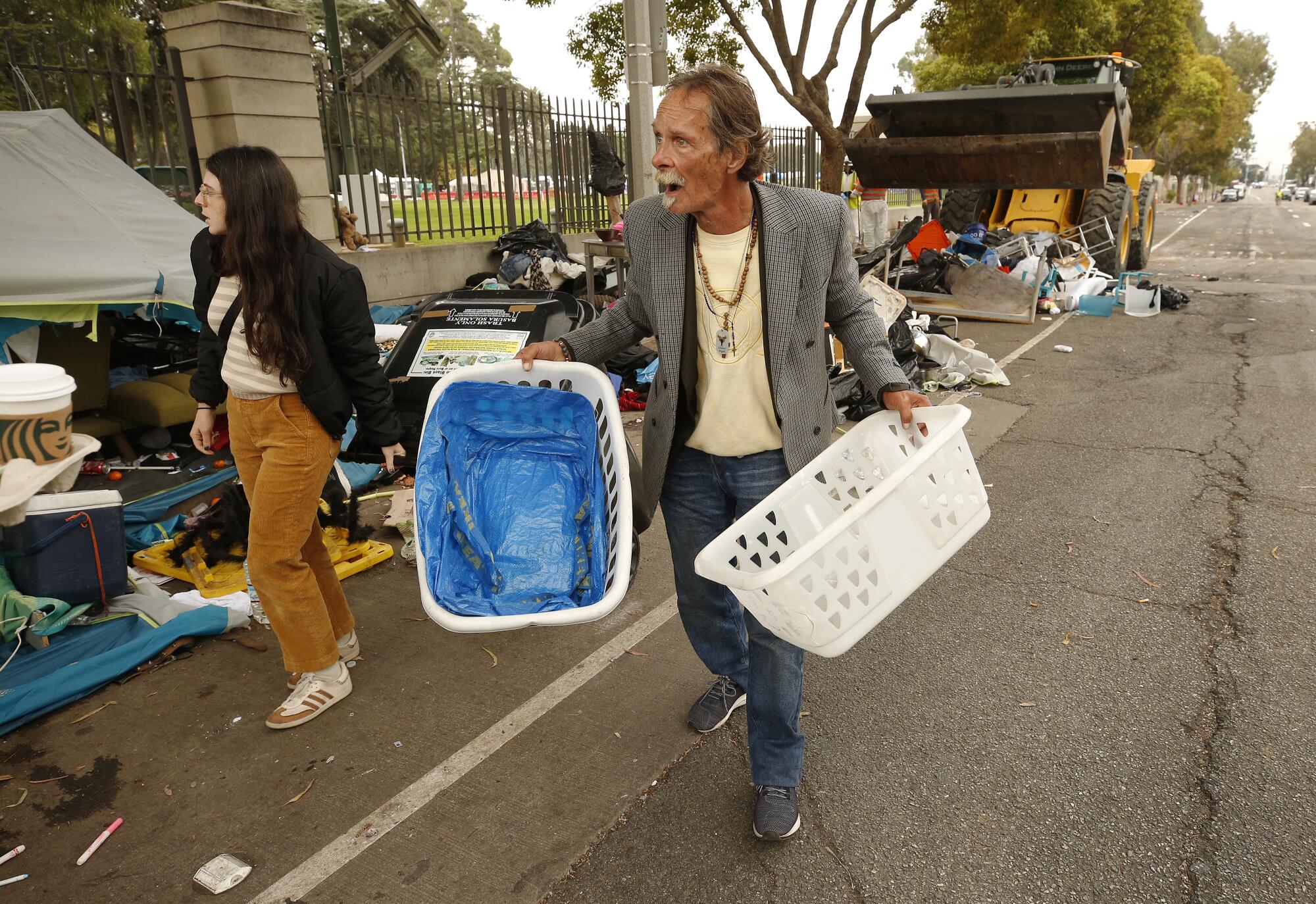
âLook at this. No human being deserves to live like this,â the Army veteran said. âThey have a good, clean property. They can give three meals a day. They deserve better. Itâs a lack of care for the war. People donât love veterans like they should. They donât love each other like they should.â
More than 40 veterans lived on Veterans Row when L.A. County Sheriff Alex Villanueva announced his plans to clear out the encampment earlier this year. Since then, volunteer groups and advocates have met with the veterans to ease their move onto the VA campus, which dates to 1888 and covers some 400 acres. More than 20 tents have been set up on the campus, along with the small village of tiny homes.
Alex Villanueva talks about his controversial term as Los Angeles County sheriff.
The goal is to find more permanent housing for the veterans who are now in the makeshift encampment on the campus, said Sheriffâs Lt. Geff Deedrick. Most of the work has been centered on outreach and building a rapport with the veterans.
âItâs about compassion and understanding,â said Deedrick, who leads the departmentâs Homeless Outreach Services.
Surrounded by the drone of the bulldozer and sheriffâs deputies, Villanueva said, âHaving people camp out in the street is not an option.â
The encampment, adjacent to the historic Veterans Affairs campus in West Los Angeles, has become a focal point for homelessness in the city, with mayoral candidates making visits regularly over the last year.
During the cleanup several veterans became emotional, calling the lack of support theyâve received from the greater VA organization damning. One veteran, who said he would leave when he was ready, screamed that he was being left to die by his country. He grabbed at his head and arms, asking no one in particular to give him room.
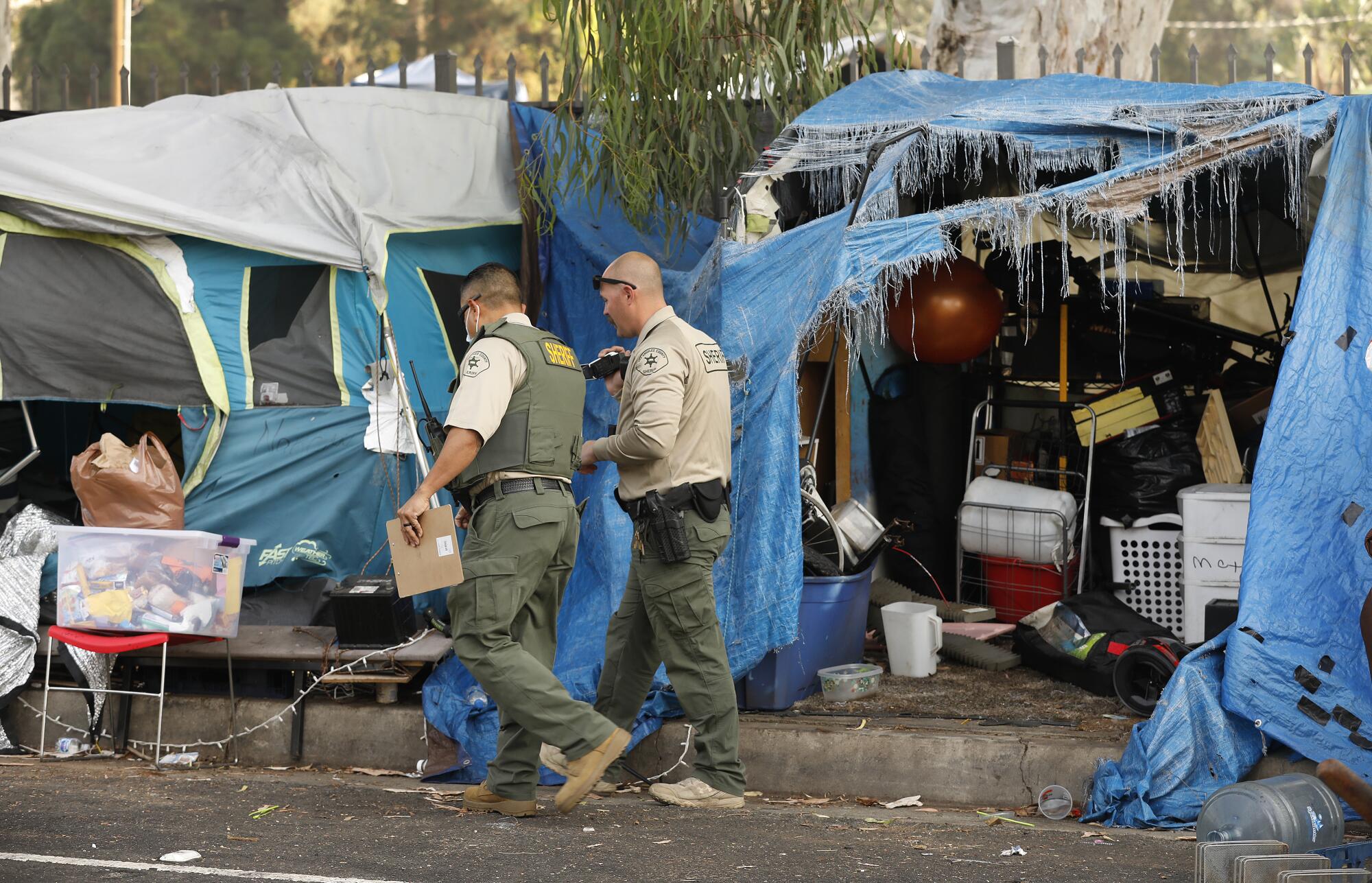
Deputies and volunteers watched as the veteran stomped outside his tent, asking them what they were looking at. He stood outside his tent as the bulldozer made its way down the line and cleared the adjacent tents. Shortly after 2 p.m. he relented and walked out with his belongings. Volunteers helped him take several items onto the VA campus.
More to Read
Sign up for Essential California
The most important California stories and recommendations in your inbox every morning.
You may occasionally receive promotional content from the Los Angeles Times.
